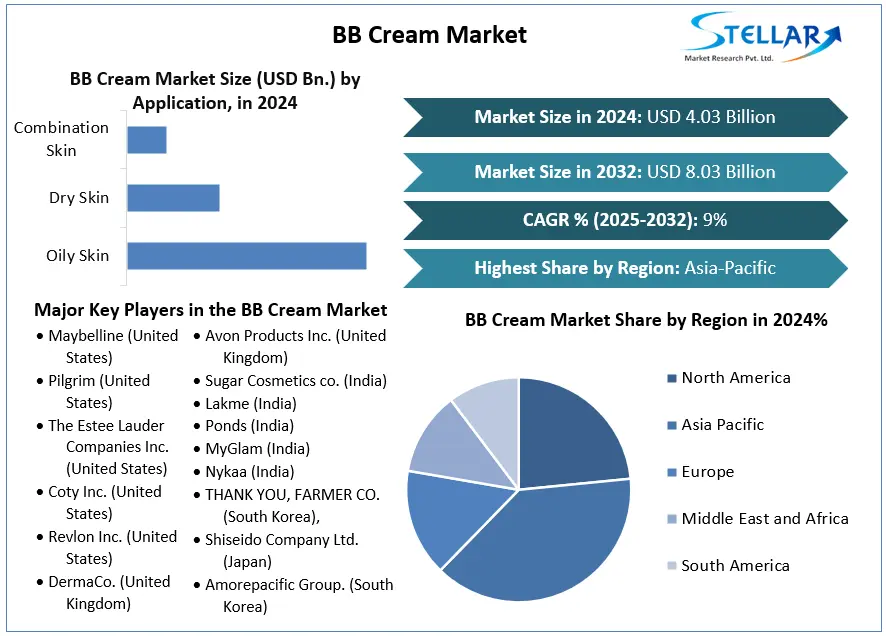Prom Dresses Market Size To Grow At A CAGR Of 3.84 % In The Forecast Period Of 2025-2032
Global Prom Dresses Market Set for Strong Growth Through 2032
Request Free Sample Report:https://www.stellarmr.com/report/req_sample/Prom-Dresseses-Market/1865
Market Estimation & Definition
The global prom dresses market is experiencing substantial growth, driven by rising youth fashion consciousness and increasing participation in formal events such as proms, galas, and school dances. Prom dresses are specially designed formal gowns that cater to teenagers and young adults, combining style, elegance, and comfort. The market includes various styles such as ball gowns, A-line, mermaid, sheath, and cocktail dresses, made from materials like chiffon, satin, silk, lace, and tulle. Growing awareness of fashion trends and the influence of social media are key drivers of market expansion.
Market Growth Drivers & Opportunities
Several factors are propelling growth in the prom dresses market:
Rising Fashion Consciousness Among Youth: Teens and young adults increasingly prioritize style and trend-based clothing for prom and formal events.
Social Media Influence: Fashion trends, celebrity inspirations, and influencer endorsements on platforms like Instagram and TikTok drive awareness and demand.
Variety and Customization: Customized prom dresses catering to personal preferences, sizes, and styles attract consumers.
E-commerce and Online Retail: Online shopping platforms provide convenience, wider selection, and access to global fashion trends.
Affordable Luxury and Fast Fashion: Availability of affordable, trendy dresses encourages higher adoption among middle-class consumers.
Emerging Trends Shaping the Future
Key trends shaping the prom dresses market include:
Sustainable and Eco-Friendly Materials: Increasing use of recycled fabrics, organic textiles, and eco-conscious manufacturing practices.
Personalized and Customizable Dresses: Consumers prefer dresses tailored to fit their body type and style preferences.
Influence of Celebrity and Pop Culture: Red-carpet fashion and celebrity-endorsed styles inspire prom dress choices.
Technology-Enhanced Shopping Experiences: Virtual try-on, AR/VR apps, and AI-driven recommendations are enhancing online shopping experiences.
Segmentation Analysis
The prom dresses market is segmented based on style, material, distribution channel, and end-user:
By Style:
Ball Gowns: Classic full-length gowns with a voluminous skirt.
A-Line Dresses: Flattering, universally appealing style suitable for many body types.
Mermaid Dresses: Fitted dresses that flare at the knees for a dramatic effect.
Sheath Dresses: Sleek and slim-fitting for elegant and simple appeal.
Cocktail Dresses: Shorter, casual-formal dresses for semi-formal events.
Press Release Conclusion
The global prom dresses market is poised for strong growth, driven by rising youth fashion consciousness, social media influence, and demand for customized and stylish gowns. Emerging trends such as sustainable fabrics, virtual shopping experiences, and celebrity-inspired designs are shaping the market’s future. With countries like the U.S. and Germany leading in adoption, manufacturers, retailers, and investors should focus on innovation, personalization, and digital engagement to capitalize on opportunities in this dynamic and evolving market.
About us
Phase 3,Navale IT Zone, S.No. 51/2A/2,
Office No. 202, 2nd floor,
Near, Navale Brg,Narhe,
Pune, Maharashtra 411041
sales@stellarmr.com
Global Prom Dresses Market Set for Strong Growth Through 2032
Request Free Sample Report:https://www.stellarmr.com/report/req_sample/Prom-Dresseses-Market/1865
Market Estimation & Definition
The global prom dresses market is experiencing substantial growth, driven by rising youth fashion consciousness and increasing participation in formal events such as proms, galas, and school dances. Prom dresses are specially designed formal gowns that cater to teenagers and young adults, combining style, elegance, and comfort. The market includes various styles such as ball gowns, A-line, mermaid, sheath, and cocktail dresses, made from materials like chiffon, satin, silk, lace, and tulle. Growing awareness of fashion trends and the influence of social media are key drivers of market expansion.
Market Growth Drivers & Opportunities
Several factors are propelling growth in the prom dresses market:
Rising Fashion Consciousness Among Youth: Teens and young adults increasingly prioritize style and trend-based clothing for prom and formal events.
Social Media Influence: Fashion trends, celebrity inspirations, and influencer endorsements on platforms like Instagram and TikTok drive awareness and demand.
Variety and Customization: Customized prom dresses catering to personal preferences, sizes, and styles attract consumers.
E-commerce and Online Retail: Online shopping platforms provide convenience, wider selection, and access to global fashion trends.
Affordable Luxury and Fast Fashion: Availability of affordable, trendy dresses encourages higher adoption among middle-class consumers.
Emerging Trends Shaping the Future
Key trends shaping the prom dresses market include:
Sustainable and Eco-Friendly Materials: Increasing use of recycled fabrics, organic textiles, and eco-conscious manufacturing practices.
Personalized and Customizable Dresses: Consumers prefer dresses tailored to fit their body type and style preferences.
Influence of Celebrity and Pop Culture: Red-carpet fashion and celebrity-endorsed styles inspire prom dress choices.
Technology-Enhanced Shopping Experiences: Virtual try-on, AR/VR apps, and AI-driven recommendations are enhancing online shopping experiences.
Segmentation Analysis
The prom dresses market is segmented based on style, material, distribution channel, and end-user:
By Style:
Ball Gowns: Classic full-length gowns with a voluminous skirt.
A-Line Dresses: Flattering, universally appealing style suitable for many body types.
Mermaid Dresses: Fitted dresses that flare at the knees for a dramatic effect.
Sheath Dresses: Sleek and slim-fitting for elegant and simple appeal.
Cocktail Dresses: Shorter, casual-formal dresses for semi-formal events.
Press Release Conclusion
The global prom dresses market is poised for strong growth, driven by rising youth fashion consciousness, social media influence, and demand for customized and stylish gowns. Emerging trends such as sustainable fabrics, virtual shopping experiences, and celebrity-inspired designs are shaping the market’s future. With countries like the U.S. and Germany leading in adoption, manufacturers, retailers, and investors should focus on innovation, personalization, and digital engagement to capitalize on opportunities in this dynamic and evolving market.
About us
Phase 3,Navale IT Zone, S.No. 51/2A/2,
Office No. 202, 2nd floor,
Near, Navale Brg,Narhe,
Pune, Maharashtra 411041
sales@stellarmr.com
Prom Dresses Market Size To Grow At A CAGR Of 3.84 % In The Forecast Period Of 2025-2032
Global Prom Dresses Market Set for Strong Growth Through 2032
Request Free Sample Report:https://www.stellarmr.com/report/req_sample/Prom-Dresseses-Market/1865
Market Estimation & Definition
The global prom dresses market is experiencing substantial growth, driven by rising youth fashion consciousness and increasing participation in formal events such as proms, galas, and school dances. Prom dresses are specially designed formal gowns that cater to teenagers and young adults, combining style, elegance, and comfort. The market includes various styles such as ball gowns, A-line, mermaid, sheath, and cocktail dresses, made from materials like chiffon, satin, silk, lace, and tulle. Growing awareness of fashion trends and the influence of social media are key drivers of market expansion.
Market Growth Drivers & Opportunities
Several factors are propelling growth in the prom dresses market:
Rising Fashion Consciousness Among Youth: Teens and young adults increasingly prioritize style and trend-based clothing for prom and formal events.
Social Media Influence: Fashion trends, celebrity inspirations, and influencer endorsements on platforms like Instagram and TikTok drive awareness and demand.
Variety and Customization: Customized prom dresses catering to personal preferences, sizes, and styles attract consumers.
E-commerce and Online Retail: Online shopping platforms provide convenience, wider selection, and access to global fashion trends.
Affordable Luxury and Fast Fashion: Availability of affordable, trendy dresses encourages higher adoption among middle-class consumers.
Emerging Trends Shaping the Future
Key trends shaping the prom dresses market include:
Sustainable and Eco-Friendly Materials: Increasing use of recycled fabrics, organic textiles, and eco-conscious manufacturing practices.
Personalized and Customizable Dresses: Consumers prefer dresses tailored to fit their body type and style preferences.
Influence of Celebrity and Pop Culture: Red-carpet fashion and celebrity-endorsed styles inspire prom dress choices.
Technology-Enhanced Shopping Experiences: Virtual try-on, AR/VR apps, and AI-driven recommendations are enhancing online shopping experiences.
Segmentation Analysis
The prom dresses market is segmented based on style, material, distribution channel, and end-user:
By Style:
Ball Gowns: Classic full-length gowns with a voluminous skirt.
A-Line Dresses: Flattering, universally appealing style suitable for many body types.
Mermaid Dresses: Fitted dresses that flare at the knees for a dramatic effect.
Sheath Dresses: Sleek and slim-fitting for elegant and simple appeal.
Cocktail Dresses: Shorter, casual-formal dresses for semi-formal events.
Press Release Conclusion
The global prom dresses market is poised for strong growth, driven by rising youth fashion consciousness, social media influence, and demand for customized and stylish gowns. Emerging trends such as sustainable fabrics, virtual shopping experiences, and celebrity-inspired designs are shaping the market’s future. With countries like the U.S. and Germany leading in adoption, manufacturers, retailers, and investors should focus on innovation, personalization, and digital engagement to capitalize on opportunities in this dynamic and evolving market.
About us
Phase 3,Navale IT Zone, S.No. 51/2A/2,
Office No. 202, 2nd floor,
Near, Navale Brg,Narhe,
Pune, Maharashtra 411041
sales@stellarmr.com
0 Comentários
0 Compartilhamentos
4 Visualizações
0 Anterior








